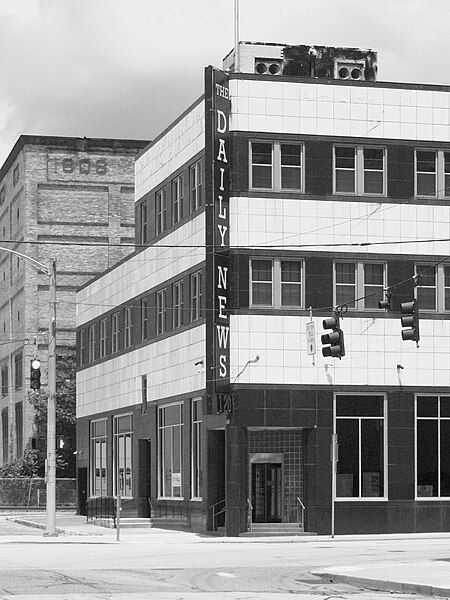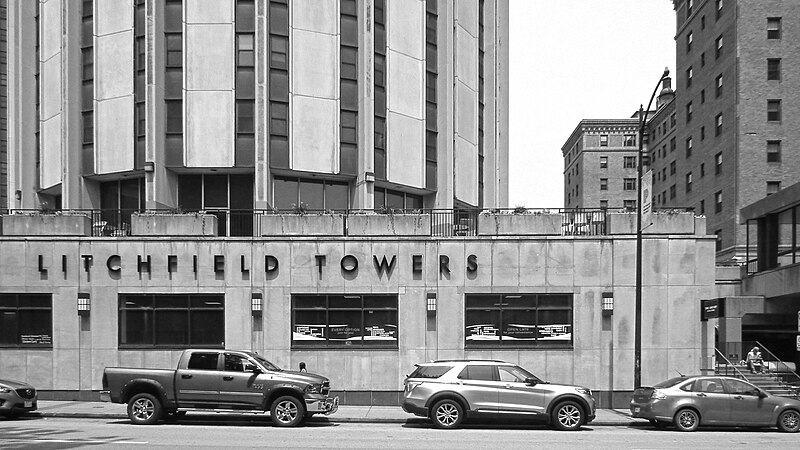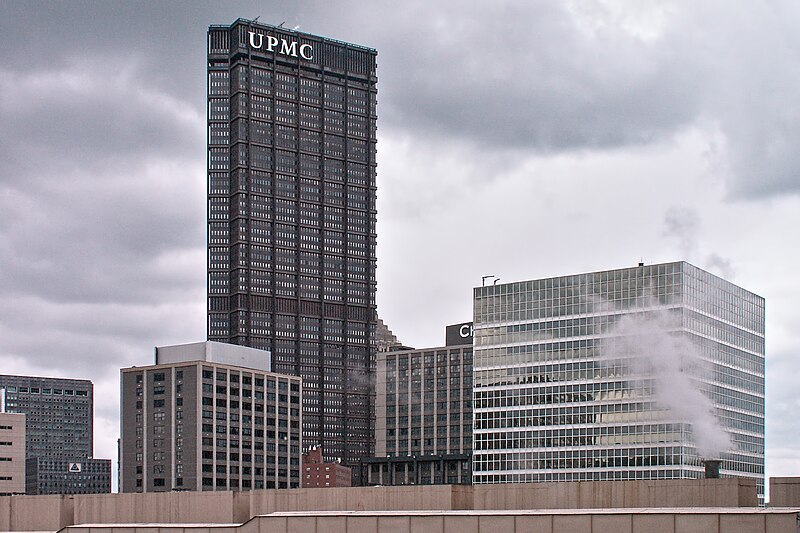
The South Vocational High School was designed by Marion M. Steen, who gave us many impressive schools around here. His father, James T. Steen, was a distinguished architect as well; Marion followed in his father’s classicist footsteps, but gradually adopted more and more Moderne mannerisms until he became one of our leading Art Deco architects. This school was a kind of vocational annex for the South High School across the street. Construction began in 1939, and it opened in 1940, just in time to be adapted to round-the-clock wartime training for mechanical trades.
This is Steen’s most aggressively modern design. He seems to have imagined a building that would look like a cross between school and factory.

Here is the Sarah Street front. As in all Steen’s other schools, the decorative details are imaginative and appropriate. These suggest a new world of technological wonder.




Now let’s walk around to the Tenth Street entrance, where we’ll find a remarkable decorative aluminum panel in the transom.

And…wait a minute…is that an inscription in…

…cuneiform?
Yes, it is a cuneiform character. It represents the Sumerian or Akkadian word for “to sow” or “to cultivate,” which is very appropriate over the door of a school.

We have many public buildings with inscriptions in Latin. But is this the only school in North America with a cuneiform inscription over the entrance? Father Pitt would love to have any others pointed out to him.
Do not suppose, by the way, that old Pa Pitt is fluent in Akkadian, much as he would like to be able to read the adventures of Gilgamesh without a translation. It was, however, easy to trace the character and feed it into an image search, and although Google did not come up with the exact character at the top of the list, it took only a bit of scrolling to find the character we were looking for. Father Pitt wishes he could say he had thought of that solution to the problem himself, but, having recognized that this was a cuneiform character, he got no further until a cleverer friend suggested the way forward.
The building is in use as the Pittsburgh Online Academy (which needs a building for some reason; perhaps our school board has only a fuzzy notion of what “online” means), so for the moment it is well kept and externally in original condition.

















